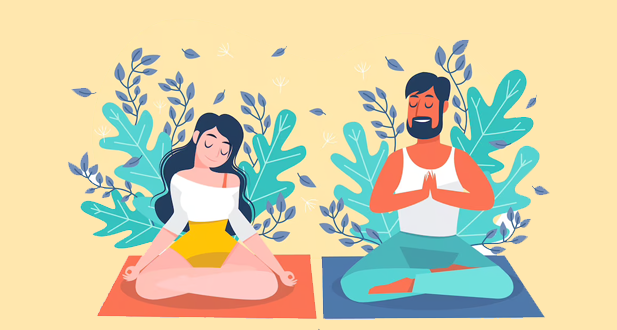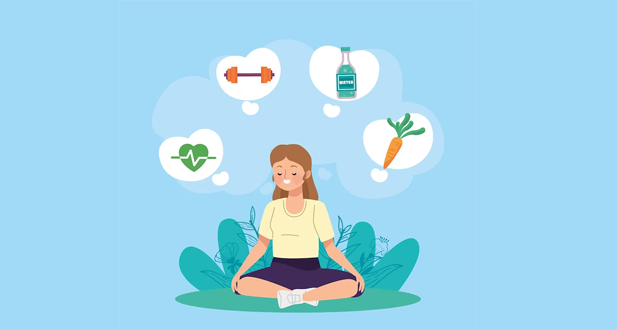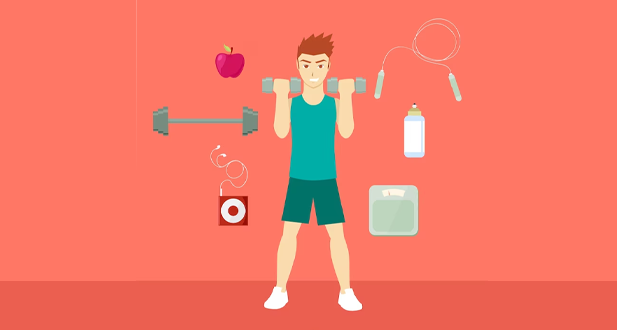
Benefits Of Yoga
Yoga is an ancient Indian practice that originated over 5000 years ago and has been widely adopted across the world as a form of exercise and physical therapy. The term “yoga” is derived from the Sanskrit word “yuj” which means “to unite or integrate”. The practice of yoga encompasses physical postures, breathing techniques, meditation, and mindfulness, and is designed to bring balance and harmony to the body, mind, and spirit.
Here we’ll explore the numerous benefits of yoga that have been scientifically proven. Whether you are new to yoga or an experienced practitioner, these benefits will convince you of the immense power of this ancient practice.
BENEFITS
- Physical Health: One of the most well-known benefits of yoga is its positive impact on physical health. Practicing yoga regularly has been shown to improve flexibility, strength, balance, and posture. Additionally, yoga has been shown to have a positive impact on a number of chronic conditions such as heart disease, asthma, and arthritis.
- Mental Health: Yoga has been shown to have a significant impact on mental health and well-being. Practicing yoga can help to reduce stress, anxiety, and depression and has been shown to improve mood and cognitive function. Yoga has also been demonstrated to improve sleep quality and lessen the symptoms of insomnia.
- Improved Breathing: The practice of yoga places a great deal of emphasis on controlled breathing. By practicing yoga regularly, individuals can learn to control their breathing and improve the efficiency of their respiratory system. Improved breathing can help to reduce stress and anxiety, and can also improve energy levels and overall well-being.
- Improved Focus and Concentration: Yoga requires a great deal of focus and concentration, and by practicing regularly, individuals can improve their ability to focus and concentrate on other areas of their life. Yoga has been shown to improve memory and cognitive function, and can also help to reduce symptoms of attention deficit hyperactivity disorder (ADHD).
- Improved Flexibility and Balance: The physical postures and movements in yoga are designed to improve flexibility and balance. Practicing yoga regularly has been shown to increase flexibility and improve balance which can help to reduce the risk of falls and injury.
- Increased Strength and Endurance: Many of the postures in yoga require a great deal of strength and endurance, and by practicing regularly, individuals can build strength and endurance over time. Additionally, it has been demonstrated that yoga enhances cardiovascular health, which can enhance physical performance and endurance.
- Pain Management: Yoga has been shown to be an effective form of pain management, particularly for individuals with chronic pain conditions such as back pain, arthritis, and fibromyalgia. The physical postures in yoga can help to reduce pain, increase flexibility, and improve overall physical function.
- Improved Sleep: Yoga has been shown to have a positive impact on sleep quality. The physical postures and breathing techniques in yoga can help to reduce stress and anxiety which can improve sleep quality and reduce symptoms of insomnia.
- Increased Energy: Yoga has been shown to improve energy levels and overall well-being. The physical postures and breathing techniques in yoga can help to increase oxygen and nutrient flow to the body, which can help to improve energy levels and reduce fatigue.
- Improved Immune System: Yoga has been shown to have a positive impact on the immune system. The physical postures and breathing techniques in yoga can help to improve the function of the immune system, which can help to reduce the risk of illness.
TIPS FOR NEWBIES TAKING THEIR FIRST YOGA CLASS
- View the syllabus in advance: You might want to look into the class more even if it is categorized as a starting class. It’s possible that although the class is beginner-level, it’s not meant to be someone’s first course. Beginning sessions are occasionally created for younger, more physically fit individuals or even those with some prior yoga experience.” Before enrolling in a course, if at all possible, speak with the instructor or observe some or all of the class.
- Try a class that moves more slowly or one that is made for beginners: Make sure the teacher tells people to listen to what their bodies are telling them. You should feel like you can just do what makes you feel good on any given day. If you’re a beginner, you don’t want a class that makes you feel like you’re in a race.
- Get in touch with the teacher: Before class starts, say hello to the teacher and let him or her know that this is your first class. You should also tell your instructor if you have any injuries or long-term health problems. They’re trained to help you alter poses to avoid injury.
- Don’t worry about the little things: Remember that everyone started out somewhere. It doesn’t have to be hard, and you don’t need special clothes or props. It can be a very simple practice. Yoga is about finding peace in the present.
YOUR COMPLETE GUIDE TO YOGA MATS AND OTHER EQUIPMENT
Some individuals think that props are just for persons who are “not good at yoga” or for those who are just starting out. That is totally not the case. Yoga practitioners of all levels frequently employ props to enhance their practice, whether for comfort, to go deeper into a stretch, or to prevent further damage.
Pose accessibility can be furthered for people of varying body shapes with the aid of props. Using a block or a yoga strap helps ensure the safety of those who may need assistance due to shorter arms or a larger torso.
In a chair yoga class, for instance, when most (if not all) of the seated poses are done in chairs rather than on the floor, props play a significant role in the instruction.
CONCLUSION
Yoga is a holistic practice that has a wide range of benefits for both the body and mind. Whether you are looking to improve your physical health, reduce stress and anxiety, or simply find a form of exercise that you enjoy, yoga is a great choice. With its low-impact nature and adaptability for people of all ages and fitness levels, there’s never been a better time to start practicing yoga.



